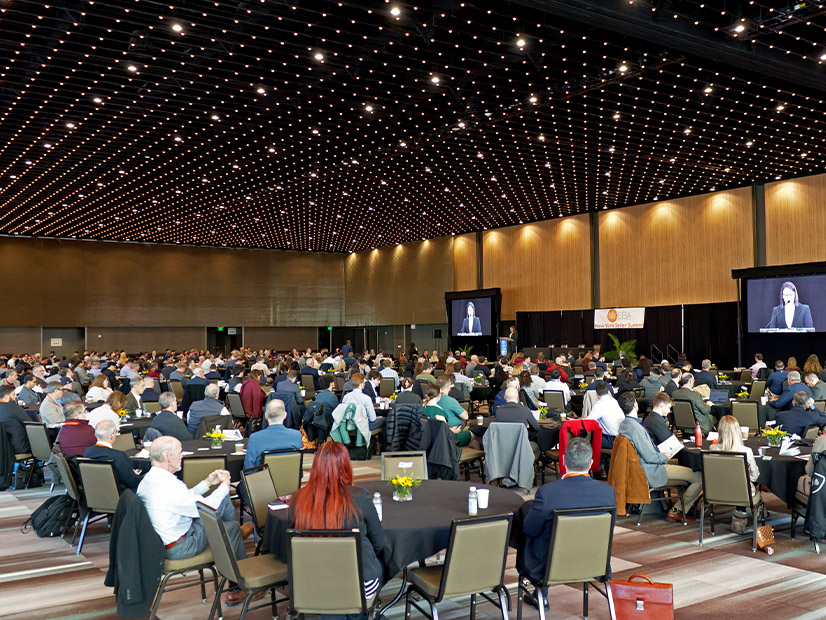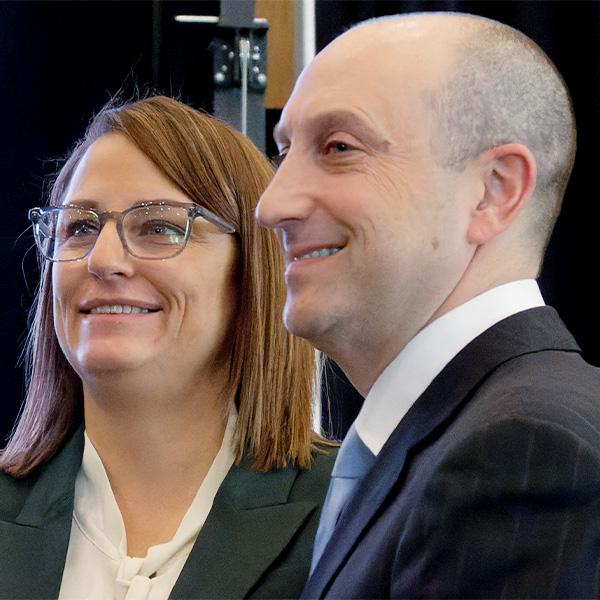
ALBANY, N.Y. — New York’s solar industry last week celebrated with state officials a mixture of favorable policies and new funding that are set to boost the industry in 2023 and beyond.
The New York Solar Energy Industries Association’s 2022 Solar Summit drew more than 500 people to the state capital, where speakers praised the state for a nation-leading energy transition plan but also bemoaned that it is one of the slowest and most expensive places to push forward generation projects.
New York surpassed 4 GW of installed solar capacity this summer and says it is on track for 6 GW by 2025 and 10 GW — or even more — by 2030.
Ben Healey of PosiGen Solar captured the mood of the gathering, saying “The tailwinds far outweigh the headwinds.”
Confluence Of Factors
Opening the summit Tuesday, NYSEIA Board President David Schieren said his group is pursuing a calling as well as business.
“Yes, it’s a profession; we’re making a living and maybe a little profit. But also we believe solar is one of the most important things we can do for society and our future,” he said. “We just have to stop burning fossil fuels.”
 NYSERDA CEO Doreen Harris and David Schieren, CEO of EmPower Solar | © RTO Insider LLC
NYSERDA CEO Doreen Harris and David Schieren, CEO of EmPower Solar | © RTO Insider LLCDoreen Harris, CEO of the New York Energy Research and Development Authority, said the state is “the No. 1 community solar market in the nation and the second-largest distributed PV market as well.”
“We have helped create more than 13,000 jobs in the solar industry,” she said. “We reduced the cost of solar by 70%. We in New York have provided over $1.4 billion in incentives, leveraging almost $7 billion in private investment by each of you, and have ensured at least 1,600 megawatts of solar are benefiting low- and moderate-income communities and households.”
Basil Seggos, commissioner of the state Department of Environmental Conservation, noted the confluence of factors in the renewable energy space on the brink of 2023 in New York: State leadership committed to change; federal funding to help make it happen; and popular support demonstrated by landslide voter approval of an environmental bond act last month.
While acknowledging challenges such as supply chain and labor shortages, he said: “I’m extraordinarily optimistic — I’m optimistic every day.”
Harris and Seggos co-chair the state’s Climate Action Council, which on Monday released the Scoping Plan of the landmark Climate Leadership and Community Protection Act, which requires the state to cut its greenhouse gas emissions by 40% from 1990 levels by 2030 and to achieve 100% emission-free electricity by 2040. (See related story, New York Climate Scoping Plan OK’d.)
 New York DEC Commissioner Basil Seggos | © RTO Insider LLC
New York DEC Commissioner Basil Seggos | © RTO Insider LLC“A plan is just a plan,” Seggos said. “Then it really shifts to us to begin implementing it; 2023 is going to be an extraordinary year.”
Others said they expect a domestic solar manufacturing sector to arise with the support offered by the Inflation Reduction Act and other recent federal legislation.
“The U.S. has really lacked a cohesive industrial policy for a long time, and what the IRA does is it starts building that foundation,” said Lindsay Cherry of Qcells. “The policy certainty that we have now is just unprecedented. I’m beyond excited for what’s to come.”
Dan Fadden of Greentech Renewables said setting up a U.S. manufacturing operation is a “holistic” challenge but “we’re going to make the numbers work. This has a lot of momentum. I think it’s a highly likely outcome that a lot of our supply chain will be domesticated probably over the next 10 years.”
Ahmar Zaman of New Energy Equity said: “Finally we have a 10-year ramp from the federal government’s perspective in terms of incentives.”
Limitations
Others spoke of the challenges facing solar, among them interconnection delays, rising interest rates and New York’s home rule. (See related story, Solar Industry Challenged by N.Y. Home Rule.)
Tom Vaccaro, National Grid’s director of transmission for renewables, said utilities are using essentially the same planning process as they have for a century and need to adapt rapidly to distributed and intermittent power sources. “We, as planners and utilities, need to do more work with all of you,” he said.
Dave Gahl of the Solar and Storage Industries Institute said transmission delays exist everywhere, with interconnection wait times nationwide doubling in the last decade and a long backlog of solar, wind and storage projects awaiting access to the grid. “Interconnection is having a national moment,” he said.
Zaman noted that the solar industry’s decade of strong growth came amid historically low interest rates. Rising interest rates were his biggest worry at the start of 2022, but the IRA helped assuage that.
The View from the Field
Downstairs from the policy discussions, some of the people who work in the solar power industry sat at trade show tables, promoting their goods and services. Several told NetZero Insider that business is strong and they expect it to get better, despite labor and supply chain constraints.
Project managers Olya Prevo-White and Chris Koenig of C.T. Male Associates said the design firm is doing a steady solar consulting business, handling permitting, site planning and other work for developers.
The firm began to actively seek solar work around 2010.
“There’s certainly a change, even between last year,” Preto-White said. “Maybe not in the amount of work we’ve done but in the confidence in the industry. Everybody seems to be excited for the growth.”
They have been quite busy for the last few years, Koenig said. They can take on additional work but some of the individual teams may be backlogged at any given time.
Jim Brown was promoting a new home energy storage product that LG Electronics Energy Storage Systems debuted in the U.S. market in September: the Home 8 ESS, a modular two-box system that contains a lithium-ion battery, inverter and power management system and can be monitored via smartphone app.
It’s a business-to-business sales model, Brown said, and solar installers can pitch it to their customers in a variety of ways: promoting green energy by storing power from home solar panels; not drawing from the grid when rates are high; and having a backup power source during a blackout.
With only 14.4 kWh of usable capacity, the Home 8 will not replace the grid. But it will keep a home running for several hours or even a couple of days, depending on how much current the homeowner draws, Brown said.
Brown likens it to an insurance policy.
“Residential energy storage is energy insurance,” he said. “There’s always a green element to it [but] it’s not necessarily part of the pitch.”
With LG having a significant presence in the electric vehicle market and with its appliances already present in many American homes, the company has the name recognition to capitalize on the growth in New York’s solar market, Brown said.
Devyn Smith of Schuler-Haas Electric Corp. said the Rochester-based firm runs into supply chain shortages at times.
“Material is brutal,” he said. “It’s gotten better as we moved farther away from COVID, but it’s still a major issue, especially the medium-voltage parts.”
Some key solar components are slow to arrive as well, but that is an issue for the energy performance contractor to deal with, not the electrical contractor.
Labor also is tight, Smith said, but the company works within its limits. “There’s a million projects going on in the state, so if we could find more guys we could do more work. We just book the work for the guys that we have and don’t overextend ourselves. For the industry as a whole, yes, it’s a problem. For us, specifically, it’s not.”
Convalt Energy business development manager Daniel Bryan and Chief Revenue Officer Robert Saffer were promoting the company and the photovoltaic factory it is developing near Watertown in northern New York. They expect it to begin production in late 2023. At full output, it will employ more than 300 people and annually produce residential and commercial panels with a combined 1.2 GW capacity. The company currently contracts for manufacture in Asia.
Saffer said the factory was on the drawing board before the IRA was signed into law, and there was no guarantee its domestic manufacturing incentives would come to pass.
“It was the cherry on top of the cake,” he said. “I don’t think we’d have 550 people here without the IRA.”



